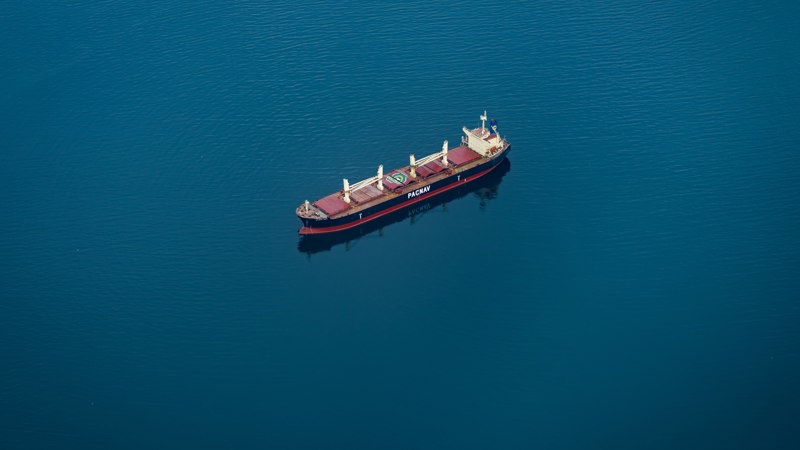
As public and political pressure mounts to decarbonise transport, one of the largest contributors to global greenhouse gases, policies to phase out petrol- and diesel-powered cars and vans in favour of electric vehicles are understandably capturing most attention.
But shipping should not be overlooked. At the global level, ships produce more emissions than aircraft, and international shipping accounts for about 3% of global greenhouse gas (GHG) emissions, and according to the Department for Transport, UK domestic maritime vessels accounted for around 5% of the UK’s domestic transport GHGs in 2021 (more than rail and bus GHGs combined). This puts pressure on the government and maritime industry to step up efforts to reach the UK government’s goal of zero-emission shipping by 2050. In addition to these carbon emissions, the large volumes of fuel consumed by shipping generate high levels of pollutants that are harmful for health and the environment.
The need to reduce the sector’s carbon footprint led the International Maritime Organization (IMO) to adopt in 2023 an IMO GHG Strategy aimed at reducing annual GHG emissions from international shipping by at least 20%, striving for 30%, by 2030, compared to 2008, and to reach net-zero GHG emissions by or around, i.e. close to, 2050.
So the key question is how can this vitally important sector decarbonise? Work we have carried out for the Department for Transport has shown that some progress towards the UK’s net zero ambitions by 2050 will be made under current policies, regulations and market forces along with the introduction of new, more fuel-efficient ships. But, although these changes are vitally important, they will fall far short of the IMO’s goal, let alone the UK government’s more ambitious objective. Business as usual (BAU) will not be enough.
What, then, can be done? Our report assessed the most cost-effective ways to further reduce emissions from UK shipping, beyond what is expected under BAU. The options we looked at encompassed technologies and operational changes that increase energy efficiency; ways to capture or treat exhaust emissions of GHGs and air pollutants; and alternative fuels or energy sources, including renewables such as wind and solar.
We concluded that substantial GHG emission reductions could be achieved while also cutting the overall operating costs of the ship. Typically this could be done by reducing GHGs through a shift to zero- or low-emission fuels.
Lessons from different pathways to net zero
Because the cost-effectiveness of each emission reduction option varies depending on factors such as the type of ship, prevailing fuel prices and the UK and international policy environment, we sketched out ten scenarios of how the transition to net zero in shipping by 2050 could unfold.
This scenario analysis yielded some important policy insights.
- Removing barriers to increase the uptake of energy efficiency options could both reduce GHG emissions and reduce the overall operating costs of the ship;
- Operational emissions of GHGs from UK shipping could be cut almost to zero by 2050, along with a reduction in SO2 to close to zero under a scenario in which carbon values per tonne are applied to increase the cost of fossil fuel used by ships so that it better reflects its climate change impacts;
- NOx emissions from UK shipping remain close to current levels under all the scenarios we explored. That’s because the most cost-effective fuel and machinery combinations that achieve zero-emission shipping still rely heavily on internal combustion machinery which, due to the temperatures of combustion, continue to produce NOx emissions even when used with alternatives to fossil fuels. In other words, NOx emission reductions would require additional regulation.
- Alternative low-carbon fuels will be essential to arrive at zero-emission shipping, particularly beyond 2030. In our modelling we considered the use of ammonia, methanol and hydrogen in combination with a variety of compatible machinery options, e.g. internal combustion machinery or fuel cells. Our analysis suggested that under the fuel price assumptions we used, ammonia and methanol are the preferred options over hydrogen for most of the fleet. That’s because of the higher costs of onboard storage for hydrogen, which, by taking up space, lowers the commercial returns from the ship. And under the assumptions of the scenarios we modelled, ammonia is generally preferred over methanol for the majority of ship types and sizes. An important drawback, however, is that an associated increase in NOx emissions would need to be addressed.
- There is, however, substantial uncertainty around both the costs and efficiency of low-emission fuels in both the near term and the long term. This is important to recognise, as even small changes in the costs and efficiency of hydrogen, ammonia and methanol could change the commercial incentives to shift towards any of those fuels.
Policymakers should thus keep open multiple options for alternative low-emission fuels until there is greater clarity over the pace of technological advances and associated changes in costs for shipowners.
- The sustainable production of low-emission fuels in sufficient quantity is a significant challenge. Using hydrogen, ammonia or methanol would require a source of low-carbon hydrogen, either through a technique known as steam methane reforming with carbon capture and storage or by electrolysis using renewable power.
- The preferred engine for use with the low-emission fuels we considered remains the internal combustion engine (ICE), as the capital costs are assumed to be lower cost than the alternatives, e.g. fuel cells. In contrast to cars and vans, continued reliance on the ICE could make it simpler for the maritime sector to transition to net zero given familiarity with this technology and its prevalence in the world’s shipping fleets.
Conclusion
Increasing global temperatures make it imperative to ramp up efforts to reduce GHGs. The maritime sector has an important role to play: about 95% of the UK’s imports and exports by volume is carried by sea. Technological progress and market forces will take the UK, and the world, part of the way to zero-emission shipping, but part of the way is not good enough. More must be done.
Encouragingly, more can be done. Our analysis has shown that a range of abatement technologies can be cost-effective. Solutions will vary in a sector as diverse as shipping, but key among the permutation of options will be a shift - a necessary shift - to fuels with low or no emissions.






